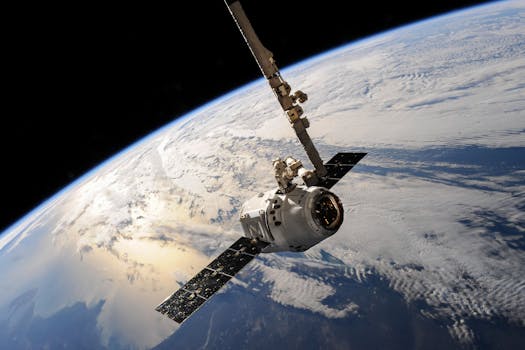
MEO Satellites: Revolutionizing Global Connectivity with Medium Earth Orbit Technology
MEO satellites, or Medium Earth Orbit satellites, are a type of satellite that operates in an orbit between 2,000 and 36,000 kilometers above the Earth’s surface. This orbital range allows MEO satellites to provide a unique combination of global coverage, high-speed data transfer, and low latency, making them an attractive solution for a wide range of applications, including telecommunications, navigation, and Earth observation.
The use of MEO satellites is becoming increasingly popular due to their ability to provide high-speed, low-latency connectivity to remote and underserved areas, where traditional fiber-optic infrastructure is often lacking. MEO satellites can offer data transfer rates of up to 10 Gbps, making them an ideal solution for applications such as video streaming, online gaming, and cloud computing.
How MEO Satellites Work
MEO satellites work by transmitting and receiving data to and from Earth-based stations, using a network of ground stations and satellite gateways. The satellites are equipped with advanced transponders and antennas, which enable them to receive and transmit data at high speeds. The data is then routed through the satellite’s onboard processor and transmitted back to Earth, where it is received by a ground station and routed to its final destination.
One of the key benefits of MEO satellites is their ability to provide global coverage, with a single satellite able to cover up to 30% of the Earth’s surface. This makes them an ideal solution for applications such as maritime communications, where vessels need to stay connected while traveling across the globe. MEO satellites can also provide backup connectivity in the event of a fiber-optic outage, ensuring that critical communications systems remain online.
Applications of MEO Satellites
MEO satellites have a wide range of applications, including telecommunications, navigation, Earth observation, and scientific research. In the telecommunications sector, MEO satellites are used to provide broadband internet access, voice over internet protocol (VoIP) services, and video conferencing. They are also used to provide connectivity to remote and underserved areas, such as rural communities and developing countries.
In the navigation sector, MEO satellites are used to provide location-based services, such as GPS and GLONASS. They are also used to provide precision timing and frequency synchronization, which is critical for applications such as financial transactions and scientific research. Earth observation satellites in MEO orbit are used to collect data on the Earth’s climate, weather patterns, and natural resources, such as ocean currents and crop yields.
Benefits and Challenges of MEO Satellites
The benefits of MEO satellites include their ability to provide global coverage, high-speed data transfer, and low latency. They are also relatively low-cost compared to other types of satellites, such as geostationary satellites. However, MEO satellites also have some challenges, such as the need for complex orbital mechanics and the risk of interference from other satellites and terrestrial systems.
Despite these challenges, MEO satellites are becoming increasingly popular due to their ability to provide high-speed, low-latency connectivity to remote and underserved areas. As the demand for global connectivity continues to grow, MEO satellites are likely to play an increasingly important role in the development of next-generation telecommunications systems.